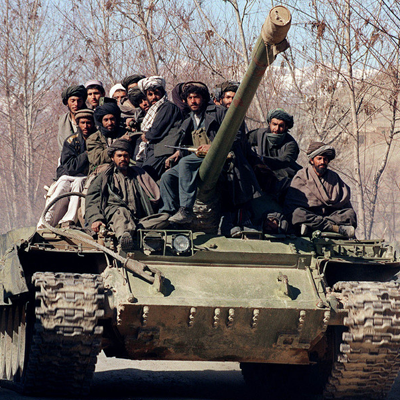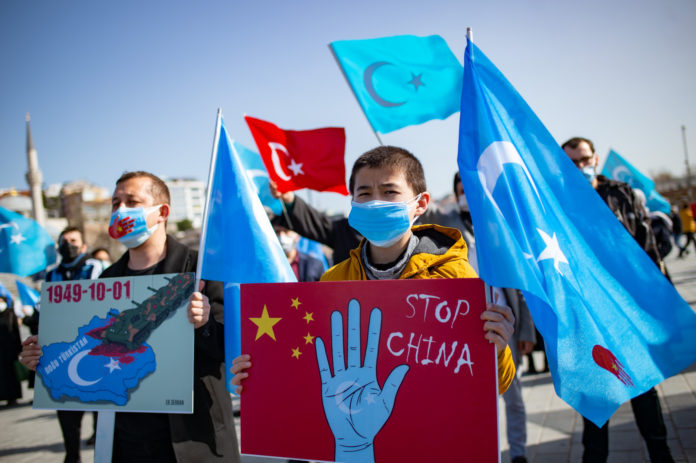Thanks, Sir. I think you got it right about potential risks for the region. I know that in polite conversations, these topics are not discussed but in the real and cruel world people talk about their dreams and delusions and it is directly proportional to the level of their knowledge or ignorance. This has been at least my experience of dealing with many from different countries who have front row seat to this blood sport.
Here are my two cents. In my view, there is no agreement yet about the policy going forward but there are conversations about what is called ‘controlled chaos’. Some see huge opportunities in the current situation where all potential trouble makers in Washington’s eyes can be paid back in the same coin. Keeping Russia busy defending its southern borders by spending more military and diplomatic capital, highlighting human rights violations of Uighurs on the diplomatic front and limited support to do some fireworks in Xinjiang by using the Wakhan corridor, destabilize Iran’s eastern border thus almost completely encircling Iran as currently Israel is using Iraqi Kurdistan and Azerbaijan to cause trouble. Igniting another border and more involvement in Afghanistan will waste more Iranian intelligence resources. Turkey under the neo-Ottoman dreamer Erdogan has gone from ‘zero trouble with neighbors’ foreign policy of decades to ‘100% trouble with every neighbor’ quagmire. He is arrogant and ignorant enough to be easily enticed into putting his hand in the snake pit of Afghanistan. There have been reports of increasing Turkish parleys with Pakistan and several mysterious military flights from Istanbul to Chaklala air base have landed. We don’t know the details yet but I’m suspicious that the cargo has something to do with Afghanistan and it is not humanitarian aid.
Everyone and his cousin in Washington is very angry at Pakistan. The dangerous part is that now Afghanistan is not being seen as a separate entity for management purposes. The talk is about the region and it is now ‘Pak-Af’ that means support of anti-Taliban groups in Afghanistan and Pakistan mainly on the political front at this stage and if needed in future a military front can also come into play. The goal is to create a ‘cordon sanitaire’ around Talib country of southern and eastern Afghanistan that is the traditional Loy Kandahar and Loy Paktiya regions. This means strengthening both Pashtun and Baloch nationalist forces in Balochistan. In Khyber Pakhtunkhwa (KPK), if Pashtun Tahaffuz Movement (PTM) is converted into a political party and the moribund Awami National Party (ANP) wakes up and revamps its structure, it can create a political barrier to the Taliban narrative. In addition to these ethnic forces, two major political parties i.e. the Pakistan Muslim League Nawaz and Pakistan Peoples Party (PPP) have no love lost for the Afghan Taliban. During their respective tenures (2008-2018), they tried desperately to get rid of the flea infested Afghan blanket but the Army came in the way. Even a limited retreat of the army in the current scenario provides the room for push back for all anti-Taliban forces.
The Afghan Taliban leadership will try a hand at ‘reverse strategic depth’ by supporting the religious segment, especially fellow Pashtun Deobandi lot of KPK, Balochistan and the metropolis of Karachi. This will be their attempt at political front. In future, if circumstances force a military front, then their natural allies will be Tehreek-e-Taliban Pakistan (TTP).

For the northern part of the region, there is talk about the Kurdish model that was adopted for Iraq. A de facto independent region although the Afghan scene is quite different as there is no history of separatism among non-Pashtuns and also it is not one single ethnic entity in the north. If somehow, this time around non-Pashtuns come to the conclusion that the Taliban are a dominant military force in control of Kabul for the foreseeable future who are not willing to share and they don’t have strong Pashtun partners to wrest control back and run as a joint venture, then other options come to the table. Even in that case, this model will require some modification. One possibility is the ‘Canton model’ attempted in Syria for different ethnic and sectarian groups. The base for northern plan will likely be Tajikistan. Contrary to popular belief, it will be Afghan players that will determine the future course, outsiders will be simply enablers.
In my view ‘controlled chaos’ is a misnomer as chaos takes its own course and apprentice sorcerers cannot even comprehend, let alone control it. My personal view is that like every government change (although we may not agree with the method of taking control), the Taliban should be given a chance of at least three years to prove what they mean. Formal recognition can be kept on the back burner for now while channels are kept open at different levels. In the meantime, humanitarian aid channeling directly to the people to prevent famine and further dislocations while gently pushing the Taliban to modify their stance on some issues, especially inclusion of other groups and female education. On the part of Talib, if he can keep violence below a certain threshold where it does not hamper daily activities for the next few years, that will be an achievement. In my view patience is needed; but alas, patience has never been an American virtue.
“The everlasting battle stripped from us care of our own lives or of others”. T. E. Lawrence.




